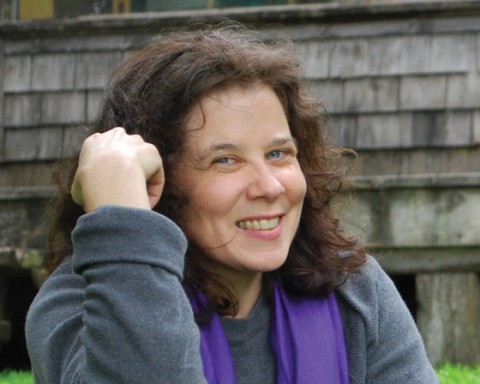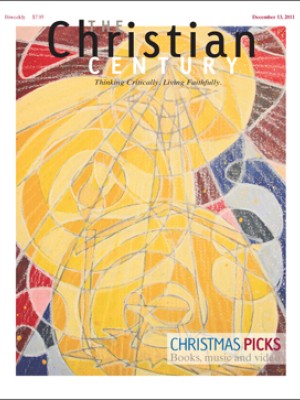Times of abundance: Terra Brockman on food and feasting

Terra Brockman is an advocate for—and close observer of—sustainable agriculture. She founded an organization called The Land Connection that works to preserve farmland, train new farmers and connect people with local food. She lives in central Illinois and is the author of The Seasons on Henry's Farm: A Year of Food and Life on a Sustainable Farm.
What is life like at the farm after the harvest is over?
I call it the wabi-sabi time of year. Wabi-sabi is the Buddhist concept that everything changes; impermanence is itself a thing of beauty. My brother Henry says that this wabi-sabi season is all about "the beauty of sadness, and the sadness of beauty." It is sad in one way to see the leaves fall, the basil blacken, and the tomato and other annual plants turn to mush. But all those dead plants break down and become food for fungi and bacteria and enhance next year's crops.
Read our latest issue or browse back issues.
On an aesthetic level, I love the stark beauty of winter. Everything is stripped away. You get down to the basic structure of things. You get to see in a new way.
What can farming teach us about feasting?
On the farm, there are natural feast times, times of abundance. When you have abundance, you tend to be really profligate with sharing. When the winter squashes come in, for example, any one that has a little softness in it needs to be shared and shared quickly.
My mom's tradition is southern Italian Catholic. My grandma said they used to eat a crust of bread and half an onion—that was their everyday food. Christmas Eve is very spartan in this tradition—dry spaghetti with salt cod. No olive oil even.
Christmas Day includes making ravioli together. We spend hours around a table making these raviolis with two fillings, one with ground beef from my dad's cattle, and one of ricotta and winter greens. It is a feast of shared labor. This isn't a feast where things just appear on the table. In American culture, we often have the idea of the feast appearing magically from the kitchen without labor. We work to produce our feast, but the work is fun and every ravioli is different, oddly shaped, imperfect. They don't look like ravioli from the freezer aisle. The participatory aspect is the most important part of the feast.
How is feasting balanced with times of less abundance?
In February and March, the months before we get the first wild and perennial greens, the root cellar and freezer are emptying out. We are not suffering, we are not hungry, but we are making do with what we have. With the apparent abundance in the grocery store all the time, many people have lost the art of making do and have lost a sense of the ebb and flow of the natural world.
Food is too often seen as an inanimate commodity, not something deeply connected to the earth. In fact, modern industrial agriculture has created a disconnect not only between people and the seasons, but between people's food and their values of caring for others and stewarding the earth. The complicated and opaque food chain that goes through processors, manufacturers, packagers, shippers, advertisers and retailers is damaging to people and to the earth.
One way forward is to reboot our relationship with food—in times of abundance and times of scarcity—making it more local, more personal, more connected and meaningful.
You talk about the fun of making ravioli—but many people feel exhausted by the holiday season.
We've been persuaded by a $5 billion advertising industry that "we are too busy," or "this is so hard you can't make it by yourself." There are billions of dollars of propaganda actively discouraging people from doing simple, fun things and connecting with friends. I think part of my work is trying to open people up to life's simple pleasures.
Holiday exhaustion—spiritual and physical—comes, I think, from not getting together to enjoy and recharge. Making food together is energizing.
People have been misinformed to think that you need four hours to cook a meal. The quickest stir-fry is faster than the fastest fast food.
I have taken to eating a lot of food on toast lately—greens or mushrooms or radishes. It takes less than five minutes to put bread in the toaster oven and slice the radishes or stir-fry the greens as the bread is toasting. It's simple, delicious and satisfying.
Perhaps we are also uneasy with "imperfect" food?
I think that's true. We've been persuaded by advertising that an apple must be bright red and shiny. That view actually sets us up for a very disappointing taste experience—not to mention that apples top the list of the most pesticide-laden produce.
I learned about the importance of imperfection when I lived in Japan. In the Japanese tea ceremony, you have to use imperfect clay bowls because the aging, cracked, asymmetrical bowls force you to see beyond the surface to the spark of light and beauty within. The spark points to perfection within imperfection.
Food is not about some perfect size or color or presentation. It's about joining us to the earth, our fellow creatures, family, guests and ultimately God. It's about life here and now, about seeing the spark of light and beauty in our world and our lives, even with all their imperfection and unpredictability.
Can you say more about imperfection and feasting on the farm?
Every time we harvest vegetables or fruits on my brother Henry's or sister Teresa's farms, there are many things that aren't quite good enough to sell. Since they are "for us"—for the family and apprentices—we call them the "for-us-es"—the imperfect things, too ripe, too misshapen, too big, too small. Even though we can't sell these, they are often the most delicious. The tomatoes that are just on the edge of rotting, the pear with a bad spot. The imperfection is the perfection.
I just cooked up a bunch of "for us" squash. They had soft spots, but I carved them out and the imperfect squash came out perfectly delicious. Bug holes in the greens don't matter either, once you've cooked them. And a worm at the tip of an ear of sweet corn proves that there were no poisonous chemicals used on it.
My dad likes to tell the story of a friend who visited him in the watermelon patch. The friend said, enviously, "You probably get all the best watermelons." My dad laughed, "No, we never get the best ones." He showed him all the cracked, broken, slightly rotten watermelons that were in the "for us" pile and said, "These are the ones we eat."
What's your message to those who don't live so close to the land?
Start with just one item—say, eggs. It's easy these days to go to LocalHarvest or other websites and type in "local eggs" and find a local farmer who raises them in a good way. You'll find that those eggs will be more delicious and more meaningful. If you get just a few items from a local farmer, or even a few herbs from your windowsill, you create a personal connection to food and to the people and place it came from. The bottom line is that good food is food that connects you to the earth and to others—it is a very real communion.






